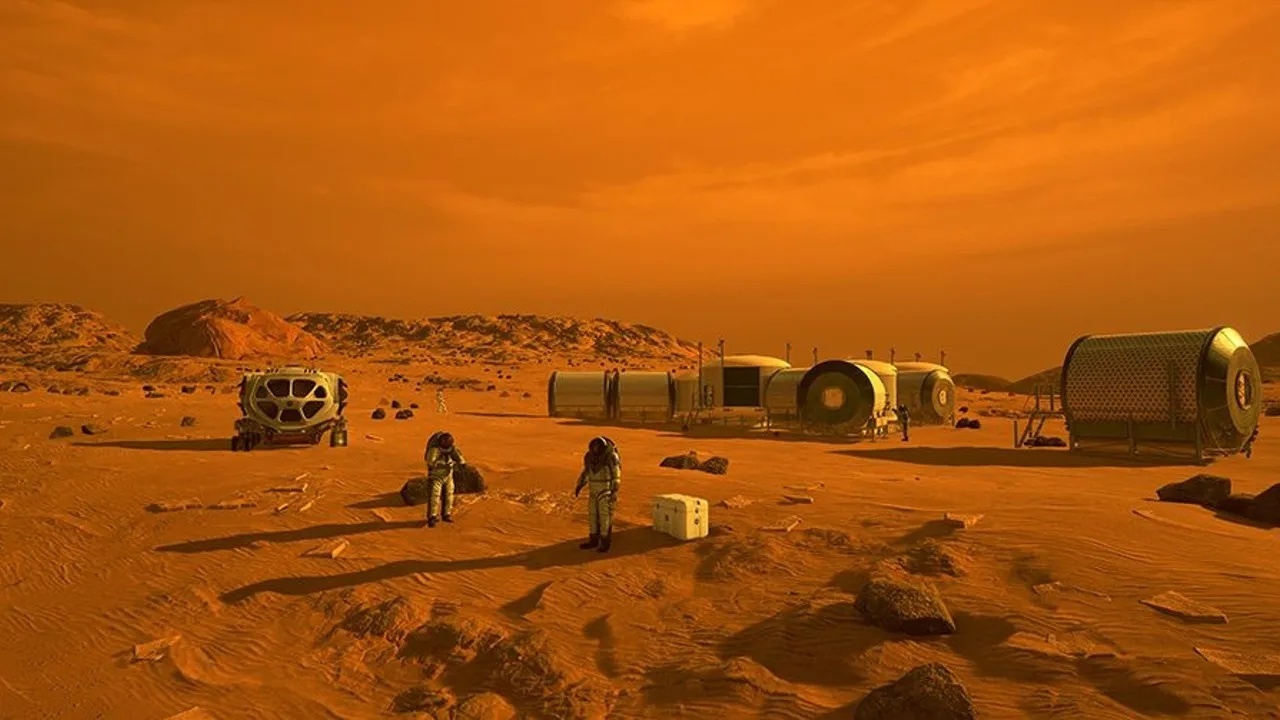20.09.2023
'Rather than rely on NASA to establish humanity on the planet Mars, I suggest we take up the challenge ourselves.'

Artist's illustration of a crewed outpost on Mars. (Image credit: NASA)
As a new era of human space exploration dawns, the concept of humans living and working on the surface of Mars is no longer the stuff of science fiction. But, if settlement of the Red Planet is to become a reality, the technology to make long stays on the Martian surface will need to be developed.
With this in mind, the Mars Society, a nonprofit organization dedicated to the human exploration and settlement of the fourth planet from the sun, has announced an initiative to create the Mars Technology Institute (MTI), a non-profit that will focus on the development of these technologies.
"SpaceX and other entrepreneurial launch companies are already moving rapidly to develop the transportation systems that can get us to the planet Mars," Mars Society President and aerospace engineer Robert Zubrin said in a statement.
Zubrin said that the necessary materials to support human settlement are already on Mars and can potentially be mined in situ on the Red Planet, but to do this, humanity will need the tech to turn these materials into materials like cement, metals, glass, fabrics and plastics. Additionally, if the right technologies exist, harvested Martian materials can also be transformed into fuel, oxygen and even food for astronauts.
Putting biotech first
The Mars Society suggested in a press release that, in broad terms, there are three critical needs that a Mars colony will face: the severe constraints of labor, agricultural land and sources of energy.
Overcoming labor shortages could hinge on the development of robots and automated technologies as well as artificial intelligence needed to operate such systems. The lack of fossil fuels to burn on Mars and a shortage of liquid water to drive hydropower, as well as limited opportunities for solar and wind power, means that Mars settlements will have to rely on fission nuclear power plants or, if the technology proves viable on Earth, fusion power.
To tackle the lack of land on the Red Planet for agriculture, scientists could focus on biotech, including genetic engineering and microbial food production, as well as advanced agricultural systems like aquaponics and synthetic biology.
Though the MTI advisory board has already recruited a group of 12 experts in the fields of biotechnology, artificial intelligence and advanced nuclear energy technology, the Mars Society suggested that, once established for its initial efforts, the MTI should first focus its efforts on biotech. This is because these projects could be launched with less considerable financial backing than something like advanced nuclear research requires.
That isn't to suggest that developing biotech for Mars would be in any way easy, however, especially as current research in the field doesn't have to deal with the limitations delivered by the Martian landscape.
"Iowa cornfields are among the most productive farms on Earth, producing 12 metric tons of corn per hectare per year," Zubrin explained. "That's enough for a hectare to supply 30 people with a kilogram [2.2 pounds] of corn per day, or feed 20 people, assuming some land is devoted to fruits, vegetables and meat. That's extremely impressive, yet at that rate, a 100,000-person Mars town would require 5,000 hectares (around 20 square miles) of farmland — and that's under the optimistic assumption that such productivity could be achieved at Mars' half-Iowa solar illumination levels."
Zubrin added that scientists could try to augment production driven by sunlight by supplying artificial light at 200 watts per square meter, which is about 20% of sunlight received in Iowa at noon) but this would require 10 gigawatts, or 10 billion watts, of electricity — equivalent to the energy that could be delivered by 25 million solar panels.
"This results from the inefficiency of photosynthesis, which, while about 4% at the cellular level, is only about 0.2% efficient in converting the solar energy impacting a cornfield into biologically useful energy in the form of corn," Zubrin said. "This is not a major problem on Earth, where vast amounts of agricultural land are readily available. But it's a show-stopper for Mars.
"We need to solve this using biotechnology. By so doing, we will not only make it possible for humanity to become multiplanetary, we will decisively refute the canard that space advocates do not care about the basic needs of people on Earth."
Quelle: SC

